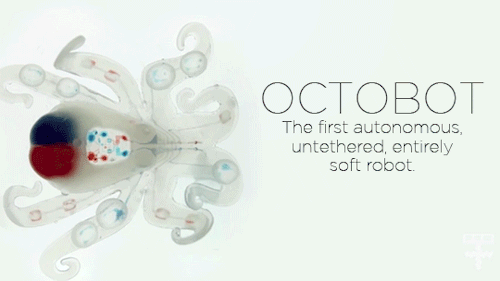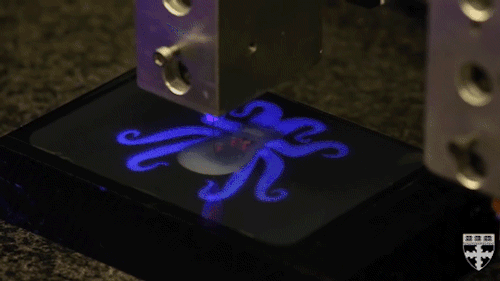What We All Need To Understand About AI In A Nutshell:
What we all need to understand about AI in a nutshell:
There’s an algorithm that can reliably predict, from aggregate facebook posts, the onset of a manic episode in a person suffering from bipolar disorder – more reliably even, than a trained psychotherapist, who only has access to the information a patient provides them in therapy sessions.
“Won’t technology like that help people with bipolar disorder?”
Theoretically, it could. But this algorithm wasn’t designed to help people with bipolar disorder.
This algorithm was designed to sell plane tickets to Las Vegas.
[source]
More Posts from In-pursuit-of-knowledge-blog and Others
https://www.instagram.com/p/Bl7-9QZgea_/
“The State of Archaeology”
Such a scary title right? Well, boy oh boy do I have an adventure for you today.
So, I was at a really bougie historic preservation conference because my bosses were presenting. The last panel I went to was supposed to cover the kinds of issues with Cultural Resource Management (CRM) the state was coming across.
They ended up talking about how all of this would kind of be fixed if we had more funding from the state and more robust laws surrounding archaeological materials.
But this was a room of basically only archaeologists, and mostly professional archaeologists over the age of 35. We were in such an echo chamber. I was the only “young” student there.
SO. I start getting pissed because the same people just kept practically saying “but HOW do we fix our funding problem, we have such AWESOME sites.” “oh, the public is definitely a vital piece to archaeology” but no one was saying the (what I thought was) obvious.
TL;DR If archaeologists want to fix their problems, they need to DO something about it instead of sitting in an echochamber. WE need to make sure the public knows what we do, and more importantly, WHY it matters. We need to make sure the information we disseminate is not just for ourselves in the present, but for the public, for EVERYONE, and for everyone in perpetuity.
it is absolutely my kind of thing. so much work, such intricate pieces! I would’ve loved to be on the team that put this together.



Creepy or adorable? Researchers at Harvard University have demonstrated the first autonomous, untethered, entirely soft robot: the octobot.
Instead of being controlled by electronics, the robot’s logic board is powered by chemical reactions and fluid passing along tiny channels. Scientist have struggled to create completely soft robots because rigid components like circuit boards, power sources and electronic controls are difficult to replace.
Learn more about the octobot and soft robotics here and see the full study published in Nature here.
Videos Credit: Harvard SEAS/Image Credit Lori Sanders

Southern sea otter recovery has come a long way, but there’s still work to be done. 🐾

LiDAR continues to aid archaeologists by mapping ancient settlements in the Americas from the sky. Check out Dr. Fishers recent LiDAR research:


Flyover of Jupiters North Pole in Infrared via NASA https://ift.tt/2EM34s1
-
 okra-sama reblogged this · 3 weeks ago
okra-sama reblogged this · 3 weeks ago -
 tototoaba liked this · 3 weeks ago
tototoaba liked this · 3 weeks ago -
 girlfailureblog reblogged this · 1 month ago
girlfailureblog reblogged this · 1 month ago -
 jemthecrystalgem reblogged this · 3 months ago
jemthecrystalgem reblogged this · 3 months ago -
 chustlingbungus liked this · 4 months ago
chustlingbungus liked this · 4 months ago -
 mercurialbadger reblogged this · 4 months ago
mercurialbadger reblogged this · 4 months ago -
 cynosurus liked this · 1 year ago
cynosurus liked this · 1 year ago -
 magimerlyn reblogged this · 1 year ago
magimerlyn reblogged this · 1 year ago -
 magimerlyn liked this · 1 year ago
magimerlyn liked this · 1 year ago -
 vulpineninja liked this · 1 year ago
vulpineninja liked this · 1 year ago -
 shitdiggity reblogged this · 1 year ago
shitdiggity reblogged this · 1 year ago -
 tiibbet liked this · 1 year ago
tiibbet liked this · 1 year ago -
 diaryreadingcat liked this · 2 years ago
diaryreadingcat liked this · 2 years ago -
 temaenianpuzzle liked this · 2 years ago
temaenianpuzzle liked this · 2 years ago -
 suestohelit reblogged this · 2 years ago
suestohelit reblogged this · 2 years ago -
 lalalala-lovethis reblogged this · 2 years ago
lalalala-lovethis reblogged this · 2 years ago -
 elizabethgoudge reblogged this · 2 years ago
elizabethgoudge reblogged this · 2 years ago -
 elizabethgoudge liked this · 2 years ago
elizabethgoudge liked this · 2 years ago -
 1queerengineer reblogged this · 2 years ago
1queerengineer reblogged this · 2 years ago -
 shittlesmcgiggles liked this · 2 years ago
shittlesmcgiggles liked this · 2 years ago -
 azzerus liked this · 2 years ago
azzerus liked this · 2 years ago -
 operatorfortheboogeymen reblogged this · 2 years ago
operatorfortheboogeymen reblogged this · 2 years ago -
 rostii liked this · 2 years ago
rostii liked this · 2 years ago -
 yellow-factory liked this · 2 years ago
yellow-factory liked this · 2 years ago -
 itsmyshitposts reblogged this · 2 years ago
itsmyshitposts reblogged this · 2 years ago -
 corpupine liked this · 2 years ago
corpupine liked this · 2 years ago -
 zoned-out-cat liked this · 2 years ago
zoned-out-cat liked this · 2 years ago -
 lesbianmasterchief liked this · 2 years ago
lesbianmasterchief liked this · 2 years ago -
 itsmyshitposts liked this · 2 years ago
itsmyshitposts liked this · 2 years ago -
 theintelligentfool liked this · 2 years ago
theintelligentfool liked this · 2 years ago -
 kadethecat liked this · 2 years ago
kadethecat liked this · 2 years ago -
 gonna-fake-you-out reblogged this · 2 years ago
gonna-fake-you-out reblogged this · 2 years ago -
 demiglint liked this · 2 years ago
demiglint liked this · 2 years ago -
 herllamastrawberry liked this · 2 years ago
herllamastrawberry liked this · 2 years ago -
 shootposting reblogged this · 2 years ago
shootposting reblogged this · 2 years ago -
 kelpification liked this · 2 years ago
kelpification liked this · 2 years ago -
 roseverdict reblogged this · 2 years ago
roseverdict reblogged this · 2 years ago -
 roseverdict liked this · 2 years ago
roseverdict liked this · 2 years ago -
 lonelylikeuhsatellite liked this · 2 years ago
lonelylikeuhsatellite liked this · 2 years ago -
 nentuaby reblogged this · 2 years ago
nentuaby reblogged this · 2 years ago -
 elastique liked this · 3 years ago
elastique liked this · 3 years ago -
 thecauseisozymandian reblogged this · 3 years ago
thecauseisozymandian reblogged this · 3 years ago
Once I was made of stardust. Now I am made of flesh and I can experience our agreed-upon reality and said reality is exciting and beautiful and terrifying and full of interesting things to compile on a blog! / 27 / ENTP / they-them / Divination Wizard / B.E.y.O.N.D. department of Research and Development / scientist / science enthusiast / [fantasyd20 character]
162 posts


